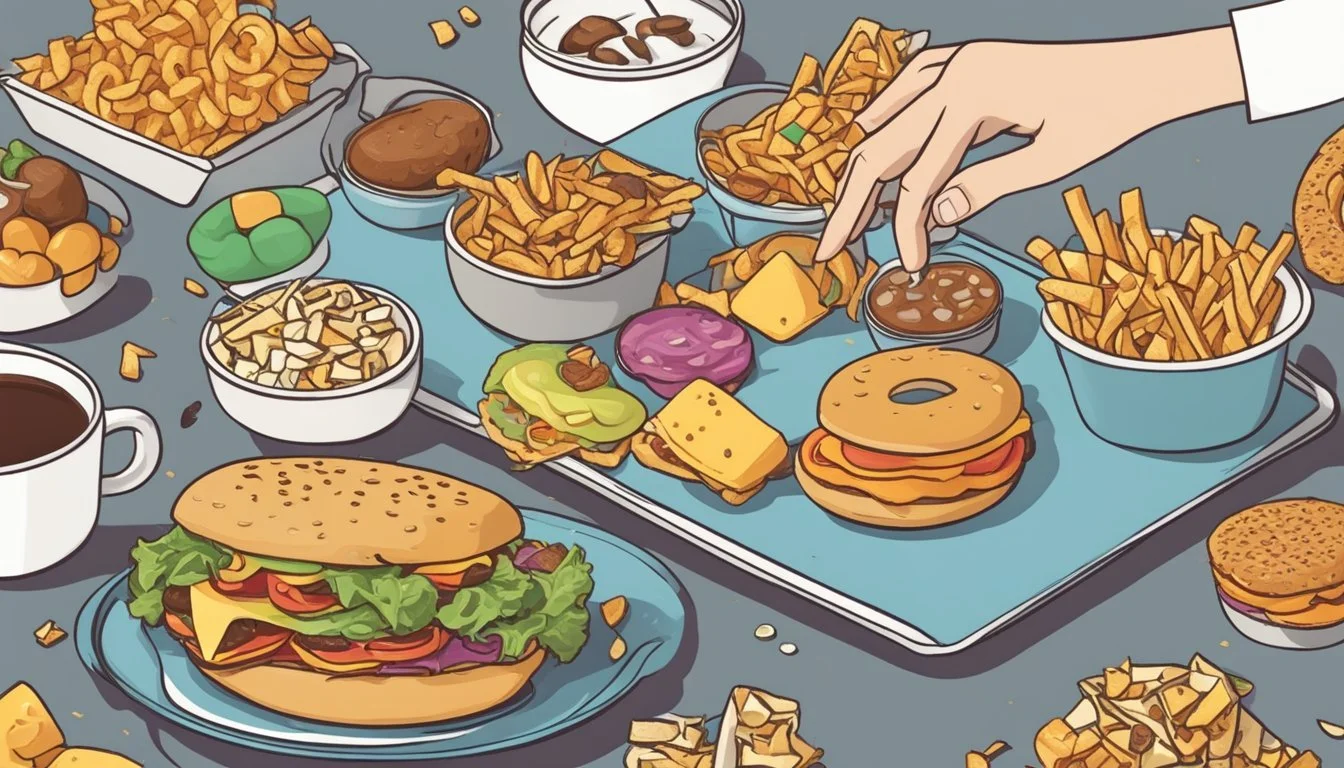Understanding Impulsivity and Impulsiveness Differences
Impulsivity and impulsiveness are often used interchangeably, but they have distinct nuances. Both terms refer to the tendency to act without thinking about consequences. Impulsivity is typically considered a broader concept encompassing various behaviors, while impulsiveness often describes specific actions or reactions.
These traits can manifest in different ways, from spontaneous purchases to risky decisions. They may be symptoms of certain mental health conditions, side effects of medications, or simply personality characteristics. Understanding the difference between impulsivity and impulsiveness can help individuals recognize and manage these behaviors more effectively.
Recognizing impulsive tendencies is the first step towards developing better self-control. Various strategies and treatments exist to help people curb impulsive behaviors, including therapy, medication, and support systems. By addressing these traits, individuals can improve their decision-making processes and overall quality of life.
Understanding Impulsivity and Impulsiveness
Impulsivity and impulsiveness are closely related concepts that involve acting without forethought. These traits can manifest in various behaviors and have significant impacts on daily life and decision-making.
Definitions and Distinctions
Impulsivity refers to a tendency to act quickly without considering consequences. It's characterized by hasty actions, lack of planning, and difficulty controlling urges. Impulsiveness, on the other hand, describes specific impulsive acts or behaviors.
While often used interchangeably, impulsivity is typically viewed as a broader personality trait or cognitive style. Impulsiveness focuses more on individual instances of impulsive behavior.
Both terms relate to acting on impulses - sudden, strong urges to take action. These impulses can lead to risky or inappropriate behaviors in various situations.
The Psychological Landscape of Impulse
Impulsivity plays a role in several mental health conditions, including ADHD and bipolar disorder. It can manifest in different ways:
Cognitive impulsivity: Making quick decisions without full consideration
Motor impulsivity: Acting without thinking
Emotional impulsivity: Rapid, intense emotional reactions
Impulse control involves complex brain processes, particularly in the prefrontal cortex. Factors like stress, fatigue, and substance use can affect impulse regulation.
Understanding these concepts helps in recognizing and managing impulsive tendencies. Techniques like mindfulness and cognitive-behavioral therapy can improve impulse control and decision-making skills.
Biological Underpinnings
Impulsivity has distinct biological foundations rooted in brain structure, genetics, and neurochemistry. These factors interact to influence an individual's tendency towards impulsive behaviors.
Brain Anatomy and Impulsivity
The prefrontal cortex plays a crucial role in regulating impulsive behaviors. This region is responsible for executive functions like decision-making, planning, and inhibition. Studies have shown that individuals with impaired prefrontal cortex function often exhibit higher levels of impulsivity.
Neuroimaging research has revealed differences in brain structure between highly impulsive individuals and those with lower impulsivity. These variations are particularly notable in areas related to reward processing and impulse control.
The amygdala, involved in emotional processing, also contributes to impulsive behaviors. Hyperactivity in this region can lead to stronger emotional responses and potentially more impulsive actions.
Genetic Influences
Impulsivity has a significant genetic component. Twin studies have demonstrated that genetic factors account for approximately 40-60% of the variation in impulsive traits.
Specific genes associated with impulsivity include those involved in dopamine and serotonin signaling. For example, variations in the DRD4 gene, which codes for a dopamine receptor, have been linked to higher impulsivity levels.
Research has also identified genetic markers related to impulsivity in individuals with conditions like ADHD and substance use disorders. These findings suggest a shared genetic basis for impulsivity across different disorders.
The Role of Neurotransmitters
Neurotransmitters, particularly dopamine and serotonin, play key roles in modulating impulsive behaviors. Dopamine is involved in reward processing and motivation, while serotonin influences mood regulation and impulse control.
Imbalances in these neurotransmitter systems can contribute to increased impulsivity. For instance:
Low serotonin levels are associated with higher impulsivity and risk-taking behaviors
Altered dopamine signaling can lead to heightened reward-seeking and impulsive decision-making
Other neurotransmitters, such as norepinephrine and GABA, also influence impulsivity through their effects on arousal and inhibition. Understanding these complex neurochemical interactions provides insights into potential treatment targets for impulsivity-related disorders.
Impulsivity in Mental Health Disorders
Impulsivity manifests differently across various mental health conditions. It can be a core symptom or a complicating factor, influencing behavior and treatment approaches.
ADHD and Impulsive Behaviors
Attention Deficit Hyperactivity Disorder (ADHD) is closely linked with impulsivity. People with ADHD often act without thinking, interrupting others or making hasty decisions.
This impulsiveness can lead to:
Difficulty waiting for turns
Blurting out answers before questions are completed
Engaging in risky behaviors
Treatment typically involves a combination of medication and behavioral therapy. Stimulant medications can help regulate brain chemistry, while cognitive-behavioral techniques teach strategies to pause and consider consequences before acting.
Bipolar Disorder and Impulse Control
During manic episodes, individuals with bipolar disorder may experience heightened impulsivity. This can manifest as:
Excessive spending sprees
Risky sexual behavior
Substance abuse
Reckless driving
These impulsive actions often lead to serious consequences, both personal and financial. Mood stabilizers are crucial in managing bipolar symptoms, including impulsivity.
Psychoeducation helps patients recognize early warning signs of manic episodes, allowing for timely intervention. Cognitive-behavioral therapy can also provide tools to manage impulsive urges.
Impulsivity in Personality Disorders
Certain personality disorders are characterized by impulsive traits. Borderline Personality Disorder (BPD) and Antisocial Personality Disorder (ASPD) are prime examples.
In BPD, impulsivity may present as:
Self-harm behaviors
Substance abuse
Binge eating
Volatile relationships
ASPD is associated with:
Disregard for social norms
Aggressive behaviors
Lack of remorse for impulsive actions
Treatment for these disorders often involves long-term psychotherapy. Dialectical Behavior Therapy (DBT) is particularly effective for BPD, teaching skills to regulate emotions and impulses.
Substance Use and Impulse Regulation
Substance use disorders and impulsivity have a complex relationship. Impulsive individuals may be more prone to substance abuse, while substance use can exacerbate impulsive behaviors.
Key points:
Drugs and alcohol can lower inhibitions, leading to more impulsive actions
Chronic substance use can alter brain chemistry, affecting impulse control
Withdrawal symptoms may increase impulsivity
Treatment approaches include:
Cognitive-behavioral therapy to identify triggers and develop coping strategies
Motivational interviewing to enhance commitment to change
Medication-assisted treatment for certain substance use disorders
Addressing both substance use and underlying impulsivity is crucial for effective recovery and relapse prevention.
Developmental and Age-Related Aspects
Impulsivity varies significantly across different stages of life. Brain development and maturation play crucial roles in shaping impulsive behaviors from childhood through adulthood.
Impulsivity in Children and Adolescents
Children and adolescents often exhibit higher levels of impulsivity compared to adults. This is largely due to ongoing brain development, particularly in the prefrontal cortex. During childhood, impulsive behaviors may manifest as difficulty waiting for turns or interrupting others.
Adolescence brings a peak in impulsivity, coinciding with increased risk-taking behaviors. This period is characterized by:
Heightened sensitivity to rewards
Greater influence of peer pressure
Incomplete development of cognitive control systems
Research suggests two distinct processes influence adolescent impulsivity:
The socioemotional system, which becomes more active during puberty
The cognitive control system, which develops gradually throughout adolescence
Impulsivity Across the Lifespan
Impulsivity tends to decrease as individuals age, but patterns can vary. Young adults may still struggle with impulsive decision-making, especially in high-pressure situations. Middle-aged adults generally show improved impulse control due to:
Fully developed prefrontal cortex
Greater life experience
Enhanced emotional regulation skills
In older adults, impulsivity may increase slightly due to age-related changes in brain structure and function. However, this can be offset by:
Accumulated wisdom
Refined decision-making strategies
Decreased sensation-seeking tendencies
Age-related impulsivity changes are not universal. Individual differences in genetics, environment, and life experiences contribute to varied impulsivity trajectories throughout adulthood.
Sociocultural and Environmental Factors
Impulsivity is shaped by complex interactions between individuals and their surroundings. Social contexts and environmental elements play crucial roles in influencing impulsive behaviors.
Influence of Social Context
Social relationships significantly impact impulsive tendencies. Peer groups often model and reinforce certain behaviors, potentially encouraging or discouraging impulsive actions.
Cultural norms and values also shape perceptions of impulsivity. Some cultures may view spontaneous decision-making positively, while others prioritize careful deliberation.
Family dynamics contribute to the development of impulse control. Parenting styles, sibling interactions, and household stability can affect a person's ability to regulate impulses.
Education and socioeconomic status correlate with impulsivity levels. Higher education and financial stability are often associated with better impulse control.
Environmental Triggers
Physical surroundings can trigger impulsive behaviors. Cluttered or chaotic environments may increase stress and reduce self-control.
Exposure to addictive substances or activities can heighten impulsivity. Easy access to alcohol, drugs, or gambling opportunities may lead to more impulsive choices.
Media and technology influence impulsive tendencies. Constant notifications and instant gratification from digital devices can reinforce impulsive habits.
Stress and fatigue often diminish impulse control. High-pressure work environments or lack of sleep can lead to more spontaneous, less considered actions.
Economic factors play a role in impulsive decision-making. Financial instability may lead to impulsive spending or risk-taking behaviors.
Assessment and Diagnosis of Impulsivity
Assessing and diagnosing impulsivity involves using specific criteria and tools, though challenges exist in accurately measuring this complex trait. Clinicians and researchers employ various methods to evaluate impulsive behaviors and tendencies.
Diagnostic Criteria and Tools
The DSM-5 includes impulsivity as a key symptom in several disorders, such as Attention-Deficit/Hyperactivity Disorder (ADHD). Clinicians use standardized criteria to identify impulsive behaviors during diagnostic evaluations.
Self-report measures like the Barratt Impulsiveness Scale (BIS) are widely used to assess impulsivity. The BIS-11, a revised version, provides a multidimensional assessment of impulsive traits.
Behavioral tasks complement self-report measures. The Matching Familiar Figures Test (MFFT) evaluates cognitive impulsivity by measuring response time and accuracy in visual matching tasks.
Comprehensive assessments often combine multiple tools to capture different aspects of impulsivity. These may include personality trait scales, behavioral observations, and neuropsychological tests.
Challenges in Assessing Impulsivity
Accurately measuring impulsivity presents several difficulties. Self-report measures can be influenced by subjective biases and limited self-awareness, potentially affecting their reliability.
Behavioral tasks may not fully capture real-world impulsive behaviors. Laboratory settings might not elicit the same responses as everyday situations, limiting ecological validity.
Impulsivity manifests differently across various contexts and populations. This variability makes it challenging to develop universally applicable assessment tools.
Cultural differences can impact the interpretation of impulsive behaviors. What is considered impulsive in one culture may be viewed differently in another, complicating cross-cultural assessments.
Comorbid conditions often co-occur with impulsivity, making it difficult to isolate and measure impulsive traits independently. This overlap can confound diagnostic accuracy and treatment planning.
Impulsivity in Daily Life
Impulsivity manifests in various aspects of everyday life, influencing decisions and actions. It can impact relationships, finances, and personal well-being, often leading to both immediate and long-term consequences.
Everyday Implications of Impulsive Actions
Impulsive behavior frequently appears in daily activities. People may make spontaneous purchases without considering their budget, leading to financial strain. In social situations, individuals might blurt out inappropriate comments, potentially damaging relationships.
At work, impulsivity can result in hasty decisions or incomplete tasks. Drivers exhibiting impulsive tendencies may engage in risky behaviors like speeding or sudden lane changes, increasing accident risks.
Impulsive eating habits often lead to poor nutritional choices. This can affect health and weight management goals.
Long-Term Consequences of Impulsivity
Persistent impulsive behavior can have far-reaching effects. In romantic relationships, it may cause trust issues and instability. Frequent job changes due to impulsive decisions can hinder career progression.
Financial impulsivity often results in debt accumulation and poor credit scores. This limits future opportunities for loans or major purchases.
Health can suffer from prolonged impulsive behaviors. Substance abuse, risky sexual practices, or neglect of medical advice are common manifestations.
Academic performance may decline due to lack of focus and poor study habits. This can impact educational and career prospects.
Legal troubles may arise from impulsive actions like reckless driving or petty theft, potentially leading to fines or incarceration.
Managing and Treating Impulsivity
Effective approaches for managing impulsivity include behavioral strategies, medication, and psychotherapy. These methods can help individuals gain better control over their impulses and improve decision-making skills.
Behavioral Strategies and Interventions
Mindfulness techniques can increase awareness of impulsive urges. Individuals learn to pause and observe their thoughts without immediately acting on them. Deep breathing exercises help calm the mind and body during moments of impulsivity.
Creating structured routines and environments reduces opportunities for impulsive behaviors. Setting clear goals and breaking them into smaller, manageable steps promotes thoughtful action. Reward systems can reinforce positive behaviors and self-control.
Identifying triggers for impulsivity allows for proactive planning. Developing specific coping strategies for high-risk situations builds resilience. Regular exercise and adequate sleep support overall impulse control and emotional regulation.
Medication and Pharmacological Approaches
Stimulant medications like methylphenidate and amphetamines can improve impulse control in individuals with ADHD. These drugs enhance focus and reduce hyperactivity.
Selective serotonin reuptake inhibitors (SSRIs) may help manage impulsivity associated with depression or anxiety disorders. Mood stabilizers such as lithium or valproic acid can be effective for impulse control in bipolar disorder.
Atypical antipsychotics are sometimes prescribed for severe impulsivity in conditions like borderline personality disorder. Naltrexone, typically used for addiction treatment, may reduce impulsive behaviors in some individuals.
Psychotherapeutic Techniques
Cognitive Behavioral Therapy (CBT) helps identify and change thought patterns that lead to impulsive actions. Patients learn to challenge irrational beliefs and develop healthier coping mechanisms.
Dialectical Behavior Therapy (DBT) combines mindfulness with skills training for emotional regulation and interpersonal effectiveness. It's particularly useful for treating impulsivity in borderline personality disorder.
Acceptance and Commitment Therapy (ACT) encourages individuals to accept their impulses without acting on them. This approach promotes psychological flexibility and value-aligned behaviors.
Family therapy can be beneficial, especially for children and adolescents struggling with impulsivity. It addresses family dynamics that may contribute to or reinforce impulsive behaviors.
Concluding Thought
Impulsivity and impulsiveness are closely related concepts that impact decision-making and behavior. While often used interchangeably, subtle distinctions exist between the two terms.
Impulsivity generally refers to a personality trait or tendency toward hasty actions without forethought. Impulsiveness, on the other hand, typically describes specific instances of rash behavior.
Both impulsivity and impulsiveness can lead to difficulties in personal and professional life. They may result in poor choices, strained relationships, or negative consequences.
Reflection and deliberation serve as effective counterbalances to impulsive tendencies. Taking time to consider options and potential outcomes can lead to more balanced decision-making.
Various strategies can help manage impulsive behaviors. These include mindfulness techniques, cognitive-behavioral therapy, and in some cases, medication under professional guidance.
Understanding one's own impulsive tendencies is key to developing better self-control. With awareness and practice, individuals can learn to pause and reflect before acting on impulses.
While impulsivity can sometimes lead to spontaneity and excitement, cultivating a balance between impulse and consideration often results in more positive life outcomes.





